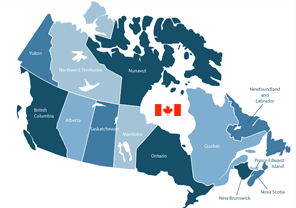By Donald J. Dalessio,
M.D. Scripps Clinic and Research Foundation,
La Jolla, California
Every year, nearly three-quarters of the population have headaches. Of all visits to physicians and emergency rooms, a little over 1% are for headache. Sufferers from severe headaches sometimes fear they must have a brain tumor or hemorrhage. However, benign headaches can be just as intensely painful as those resulting from a malignant disease. Although tumor, abscess, hemorrhage and meningitis only rarely cause chronic headache, the physician’s first concern is to rule out these possibilities. A physical exam, neurological evaluation and a variety of tests are used to detect any underlying cause, such as hypertension (high blood pressure) or fever and infection. Chronic headaches are seldom due to eye, sinus or dental problems, or to infection or allergies.
There are no precise clinical tests that serve to make the diagnosis of migraine, tension-type, cluster or other benign headache condition. Instead, the physician depends greatly on the headache sufferer’s accuracy in describing the symptoms, the pattern of the headaches, and any suspected triggers.
How long have you had these headaches?
Generally, the longer the headaches have continued unchanged, the more likely they are benign. Migraine headaches frequently begin in childhood, adolescence, and early childhood. Migraine may end at menopause but will sometimes begin at that time. Tension-type headaches can begin at any time of life.
Do other members of your family get headaches?
Migraine runs in families, but cluster headache usually does not. Cluster headache is more common in men than women, while migraine is much more common for women.
How often do you get these headaches?
Your doctor will ask you to estimate how many headaches you get per month or per year. This will be important in deciding whether the treatment approach should be prophylactic (preventing the headaches) or abortive (stopping a headache in progress).
Has the pattern or frequency changed?
People often seek medical attention because headaches have become more severe or more frequent. For example, a person who had occasional severe headaches might develop a secondary pattern of milder daily headaches. In this case it’s necessary to diagnose the primary headache condition and then try to discover the factors that might be making the headaches worse.
Where in the head do you feel the pain?
Pain that is on one side of the head and sometimes changes sides during the attack suggests the possibility of migraine. Migraine pain can occur anywhere in the head or face but most often in the temple. Tension-type headache can be on one or both sides of the head. The pain may be in the front of the head but is most often severe in the neck, shoulders and back of the head. Severe pain in and around one eye is likely to be cluster headache, if other symptoms are also present. Cluster headaches are almost always confined ton one side of the head, usually to the eye.
Describe the pain for me.
Migraine pain is typically throbbing or pulsating. A dull, nagging, persistent pain is more characteristic of tension-type headache. This pain is sometimes described as tight and constricting or as a feeling of pressure. The pain of cluster headache is deep penetrating, as though a hot poker were driven into the eye.
What other symptoms do you have with the headache attacks?
Loss of appetite, nausea and vomiting occur most commonly with migraine, and these are sometimes more incapacitating than the headache itself. Neck stiffness or tenderness often occurs with tension-type headache, and sufferers may have the habit of grinding or clenching their teeth.
How long does the headache attack last?
A typical migraine headache lasts less than 24 hours. Less commonly, a migraine can be as brief as 20 minutes or last for weeks. Generally, a migraine sufferer has headache-free periods between attacks. Tension-type headache can persist for days, weeks, or sometimes years. Cluster headaches are very intense but brief, usually lasting 30-90 minutes and repeating two to six times a day during a cluster episode.
Do you tend to get your headaches at a particular point in the day, week or month?
Cluster headaches often occur in the middle of the night, waking the sufferer from a sound sleep. Cluster headaches come in episodic clusters that continue for several weeks.
Migraine sufferers will often wake up with pain the early morning. Migraine may tend to strike on weekends, at the beginning of holidays or right after a vacation.
Women with menstral migraine will have attacks a day or two before their period comes.
Migraine or tension-type headache may occur during periods of stress or conflict. Biofeedback and relaxation training can help prevent headaches from occurring.
Have you noticed or has your family noticed a change in your mood or behavior because of these headaches?
During a migraine attack, the sufferer tends to be withdrawn, irritable and negative, avoiding other people and wanting to be alone. With tension-type headache, people are more willing to accept attention and care. Cluster headache sufferers may pace up and down or rock themselves during the attack.
Chronic headache sufferers are at increased risk of depression. Insomnia, fatigue, poor appetite and loss of sexual interest can all be signs of depression. Treating the depression, either with medication or behavioral therapy, can sometimes improve the headaches themselves.
Do you get any warning that a headache is coming on?
About 15 % of all migraine sufferers will have a warning called an aura before the headaches strikes. The aura often takes the form of the disturbances in vision, such as seeing zig-zag lines and twinkling lights. Numbness in the hands or face is another common aura. The aura usually lasts less than an hour and goes away as the headache begins. An aura that continues beyond headache should be brought to your physician’s attention.
What do you take to try to stop a headache? How much do you take?
People often seek medical attention for headaches when they are unable to get relief from over-the-counter pain medicines or medications that have been prescribed for them in the past. If you are taking pain medicines on a daily or near-daily basis you may be experiencing analgesic rebound headache. Your doctor will probably ask you to list the medicines you are taking and the amounts you take per attack or per month.
What seems to trigger your headaches?
Migraine can be triggered by food additives, by environmental factors such as bright lights or changes in the weather, and by irregular sleep or skipped meals.
Stress and alcohol consumption can also provoke headaches. Identifying and avoiding headache triggers can sometimes greatly reduce headache frequency.
Your own skills in observing and describing your headaches can be instrumental to making a correct diagnosis and choosing an effective headache management program. A headache journal in which you track your suspected triggers, your symptoms and the frequency of your headaches can provide important clues in the “detective work “of diagnosing headache.
Reprinted with permission from the American Council for Headache Education Newsletter, Headache, Summer 1996
Reviewed in September 2009
by Dr. Gary Shapero M.D.
The Shapero Markham Headache and Pain Treatment Centre
10 Unionville Gate, Suite 301
Unionville, Ontario
Canada

